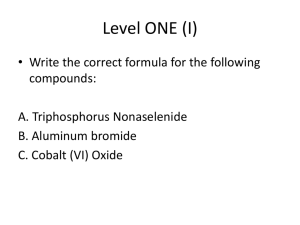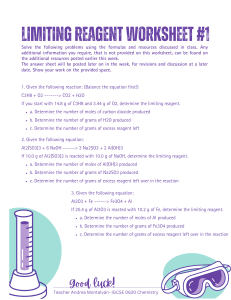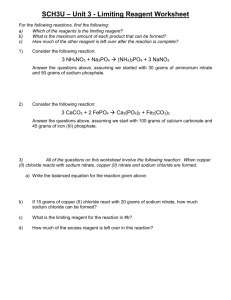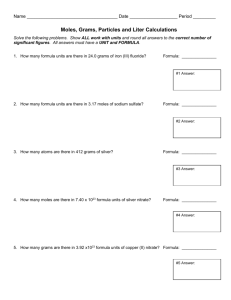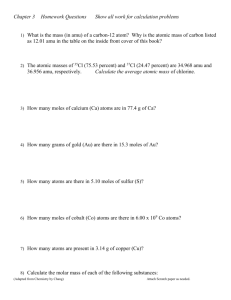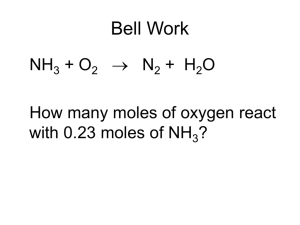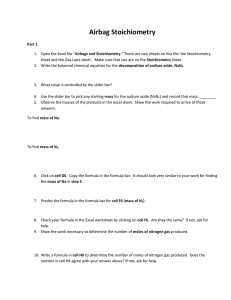File - Bchs Chemistry
advertisement
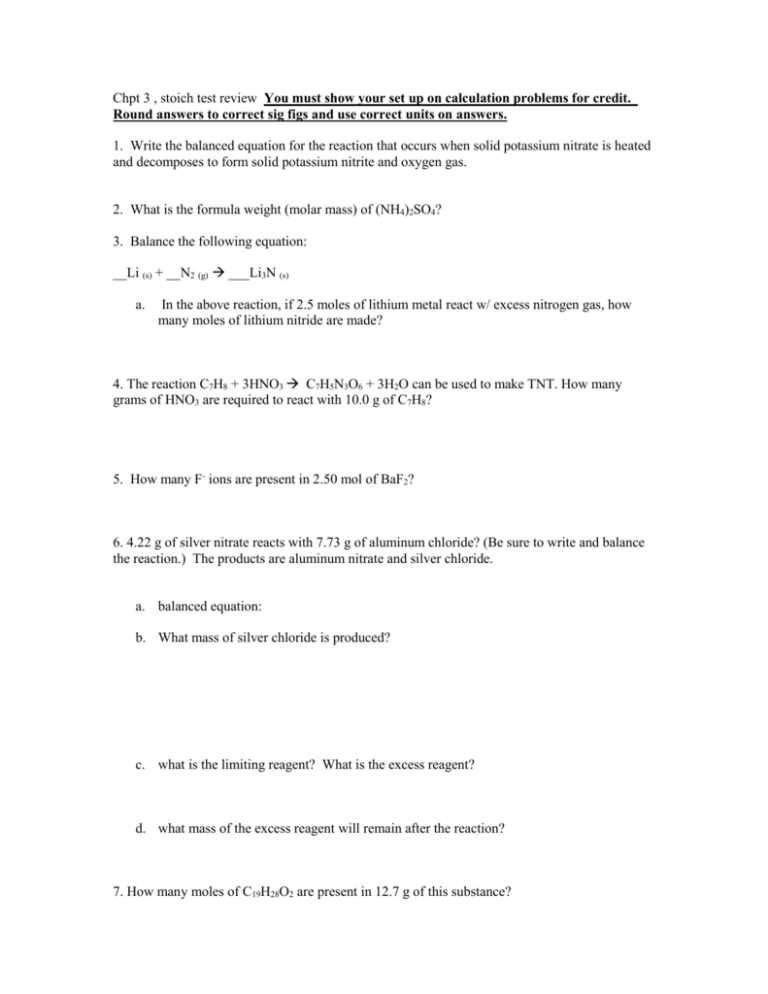
Chpt 3 , stoich test review You must show your set up on calculation problems for credit. Round answers to correct sig figs and use correct units on answers. 1. Write the balanced equation for the reaction that occurs when solid potassium nitrate is heated and decomposes to form solid potassium nitrite and oxygen gas. 2. What is the formula weight (molar mass) of (NH4)2SO4? 3. Balance the following equation: __Li (s) + __N2 (g) ___Li3N (s) a. In the above reaction, if 2.5 moles of lithium metal react w/ excess nitrogen gas, how many moles of lithium nitride are made? 4. The reaction C7H8 + 3HNO3 C7H5N3O6 + 3H2O can be used to make TNT. How many grams of HNO3 are required to react with 10.0 g of C7H8? 5. How many F- ions are present in 2.50 mol of BaF2? 6. 4.22 g of silver nitrate reacts with 7.73 g of aluminum chloride? (Be sure to write and balance the reaction.) The products are aluminum nitrate and silver chloride. a. balanced equation: b. What mass of silver chloride is produced? c. what is the limiting reagent? What is the excess reagent? d. what mass of the excess reagent will remain after the reaction? 7. How many moles of C19H28O2 are present in 12.7 g of this substance? 8. A student reacts benzene, C6H6, with bromine, Br2, to prepare bromobenzene: C6H6 + Br2 --> C6H5Br + HBr If 45.3 g. of benzene reacts with 81.0 g. of bromine, and the actual mass of bromobenzene produced is 28.2 g., what is the % yield of the experiment? 9. Determine the empirical formula of a compound that has (by mass) 52.6% carbon, 10.6% hydrogen, 36.8% nitrogen. 10. Calculate the mass percent of nitrogen in HNO3. 11. Automotive airbags inflate when sodium azide, NaN3, rapidly decomposes to its component elements via the reaction 2 NaN3 2 Na + 3 N2. How many grams of sodium azide are required to form 5.00 g of nitrogen gas? 12. How many moles of Cl are present in 15.7 g. of AlCl3. 13. A 0.250 g sample of hydrocarbon(C and H only) undergoes complete combustion to produce 0.845 g of CO2 and 0.173 g of H2O. What is the empirical formula of this compound? 14. What is the empirical formula of a substance containing carbon, hydrogen, and oxygen if 1.000 g of substance produces 1.467 g CO2 and 0.6003 g H2O upon combustion? 15. Mg + 2 HCl MgCl2 + H2 If 9.5 grams of Mg is reacted with 5.5 grams of HCl: a. Which reactant will be the limiting reagent? b. What mass of all products and reactants will remain after the reaction is complete? 16. __P4 (s) + __ F2 (g) __ PF3 (g) a. Balance the above equation b. What actual mass of fluorine gas is need to produce 120 g of phosphorous trifluoride if the reaction has a 78.1% yield.

